An extraordinary manual on statecraft and the science of living by one of classical Indias greatest minds.
Kautilya, also known as Chanakya and Vishnugupta, wrote the Arthashastra in the second century AD though the date has not been conclusively established. A master stategist who was well-versed in the Vedas and adept at creating intrigues and devising political stratagems, Kautilya was the man who destroyed the Nanda dynasty and installed Chandragupta Maurya as the king of Magadha.
The Arthashastra contains fifteen books which cover numerous topics that are of relevance even today: revolts and rebellions, structure of the state, consumer protection, salaries of government servants, property laws, labour laws, criminal investigations, the penal system, prevention of confederacies and oligarchies, the duties of the king, and a complete code of law, among others.
Artha, literally wealth, is one of four supreme aims prescribed by Hindu tradition. However, as the Arthashastra reveals, it has a much wider significance, and the material well-being of individuals is just a part of it. A remarkably comprehensive treatise of statecraft, the Arthashastra is testimony to Kautilyas genius and foresight.
Edited, Rearranged and Translated from the Sanskrit by L.N. RANGARAJAN
Cover: Illustrations of ancient coins from the Gupta period (circa AD 375-414)
PENGUIN  CLASSICS
CLASSICS
THE ARTHASHASTRA
L.N. Rangarajan graduated from the University of Madras with an M.Sc in experimental physics. He joined the Indian Foreign Service in 1956 and has been Ambassador to Greece, Sudan, Tunisia, Norway and Iceland.
A political economist with a special interest in conflict limitation and negotiation, he has contributed articles on political economy to several journals. His previous publications include: Commodity Conflict: The Political Economy of International Commodity Negotiations and The Limitation of Conflict: A Theory of Bargaining and Negotiation.
L.N. Rangarajan is married to a musician and has two sons.
KAUTILYA
THE ARTHASHASTRA
EDITED, REARRANGED,
TRANSLATED AND INTRODUCED
BY
L.N. RANGARAJAN

PENGUIN BOOKS
PENGUIN BOOKS
Published by the Penguin Group
Penguin Books India Pvt. Ltd, 11 Community Centre, Panchsheel Park, New Delhi 110 017, India
Penguin Group (USA) Inc., 375 Hudson Street, New York, New York 10014, USA
Penguin Group (Canada), 90 Eglinton Avenue East, Suite 700, Toronto, Ontario, M4P 2Y3, Canada (a division of Pearson Penguin Canada Inc.)
Penguin Books Ltd, 80 Strand, London WC2R 0RL, England
Penguin Ireland, 25 St Stephens Green, Dublin 2, Ireland (a division of Penguin Books Ltd)
Penguin Group (Australia), 250 Camberwell Road, Camberwell, Victoria 3124, Australia (a division of Pearson Australia Group Pty Ltd)
Penguin Group (NZ), 67 Apollo Drive, Rosedale, North Shore 0632, New Zealand (a division of Pearson New Zealand Ltd)
Penguin Group (South Africa) (Pty) Ltd, 24 Sturdee Avenue, Rosebank, Johannesburg 2196, South Africa
Penguin Books Ltd, Registered Offices: 80 Strand, London WC2R 0RL, England
First published by Penguin Books India 1992
Copyright L.N. Rangarajan 1987
All rights reserved
ISBN: 978-01-4044-603-6
This Digital Edition published 2010. e-ISBN: 978-81-8475-011-9
Digital conversion prepared by DK Digital Media, India.
This e-book is sold subject to the condition that it shall not, by way of trade or otherwise, be lent, resold, hired out, or otherwise circulated without the publishers prior written consent in any form of binding or cover other than that in which it is published and without a similar condition including this condition being imposed on the subsequent purchaser and without limiting the rights under copyright reserved above, no part of this publication may be reproduced, stored in or introduced into a retrieval system, or transmitted in any form or by any means (electronic, mechanical, photocopying, recording or otherwise), without the prior written permission of both the copyright owner and the above-mentioned publisher of this e-book.
DEDICATED WITH GRATITUDE TO
R. SHAMASASTRY
Who discovered the text and translated it first
and
R.P. KANGLE
whose critically edited Text, Translation and Study
are the basis for all later translations.
AUTHOR'S NOTE
- Arabic numerals indicate the number of the verse. For example, {1.1.1} Book 1, Chapter 1, verse number 1. Verse numbers are as in Kangle, The Kautiliya Arthashastra, Part I (text) and Part II (translation), second edition; University of Bombay 1969.
- Roman numerals indicate a reference to the Part and Section in this translation. I (i)Part 1, Section 1.
- Square brackets [] enclose translators additions and comments.
- Double braces {} enclose verse numbers.
- Parentheses () are used normally. In the translation, material within parantheses is that found in the text.
- Sanskrit words are in italics; diacritical marks are not used.
Contents
Part I
Part II
Part III
Part IV
Part V
Part VI
Part VII
Part VIII
Part IX
Part X
Part XI
PREFACE
Both Kautilya the preceptor and his masterwork the Arthashastra are much misunderstood. Popularly known as Chanakya, he is maligned and often ridiculed as a teacher of unethical, not to say immoral, practices and as an advocate of the theory that the ends justify the means. Chanakyan has entered Indian vocabulary as the equivalent of Machiavellian. Most people know little of what Kautilya actually said in the Arthashastra. The only thing they can recall is the mandala theory, based on the principles: Every neighbouring state is an enemy and the enemys enemy is a friend.
This popular view is not only simplistic but untrue. Only scholars of ancient Indian history are aware of the range and depth of the Arthashastra. It is a pioneering work on statecraft in all its aspects, written at least one thousand five hundred years ago. Unfortunately, the greatness of Kautilya remains unappreciated for want of a modern translation. The main objective of this translation is to make it as simple and modern as possible, avoiding intricate constructions and archaisms, thereby making it easily understood by the educated lay reader. For reasons explained in greater detail in the Introduction, the order of verses in the original text is not strictly followed in this translation; some rearrangement and regrouping by topic has been made. A lengthy Introduction and a description of the Kautilyan state and society have become necessary in order to satisfy scholars and provide the necessary background for others.
This translation is made by a political economist in the belief that the precepts of Kautilya on the social, political and economic structure of the ideal state are relevant even today. It is not for me to say whether I have succeeded. I shall be grateful for all corrections, comments and suggestions for improvement, from scholars and laymen alike.
Dharma Kumar has been a source of constant encouragement to me in this book, as she has been with all my other books. I am grateful to my wife, Joyce and my son Gautam for carefully reading through the manuscript, correcting infelicities of language, eliminating confusion in translation and, on the whole, making it more comprehensible. They also proof-read the typeset manuscript. I am also grateful to Gautam and my elder son, Vijay, for help in word processing, typesetting and drawing the diagrams.
Next page

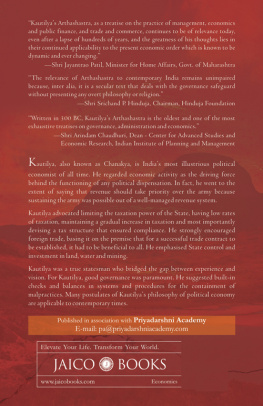
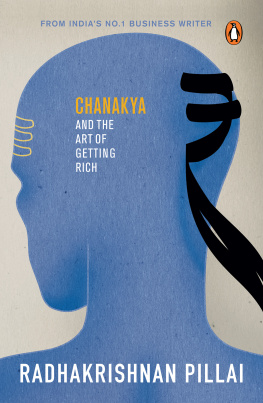
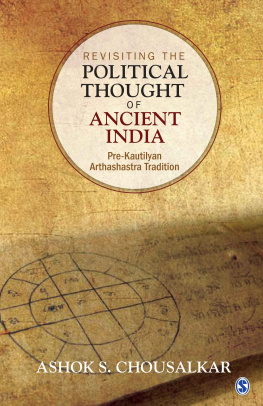

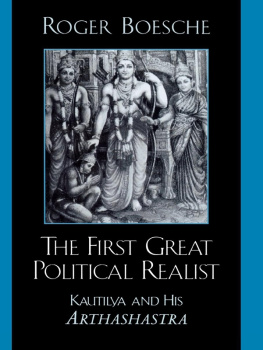
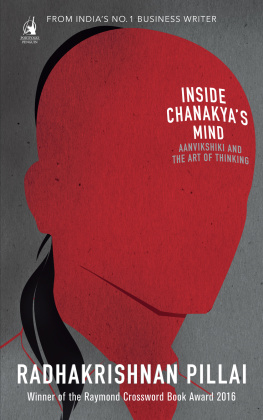

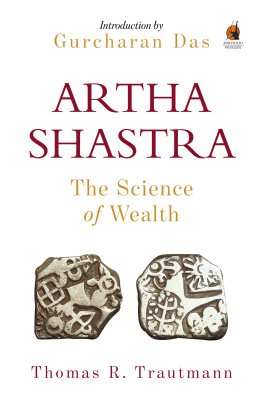
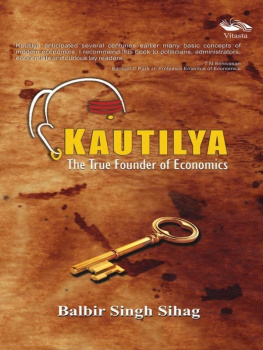
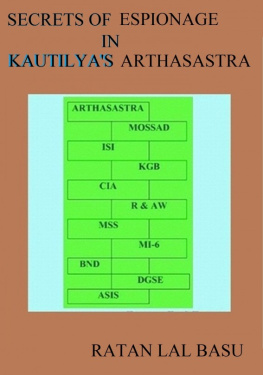
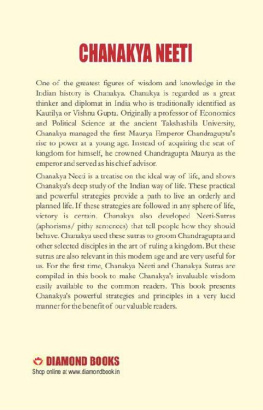
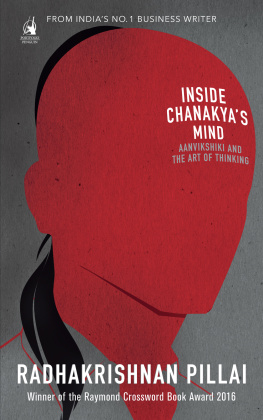
 CLASSICS
CLASSICS